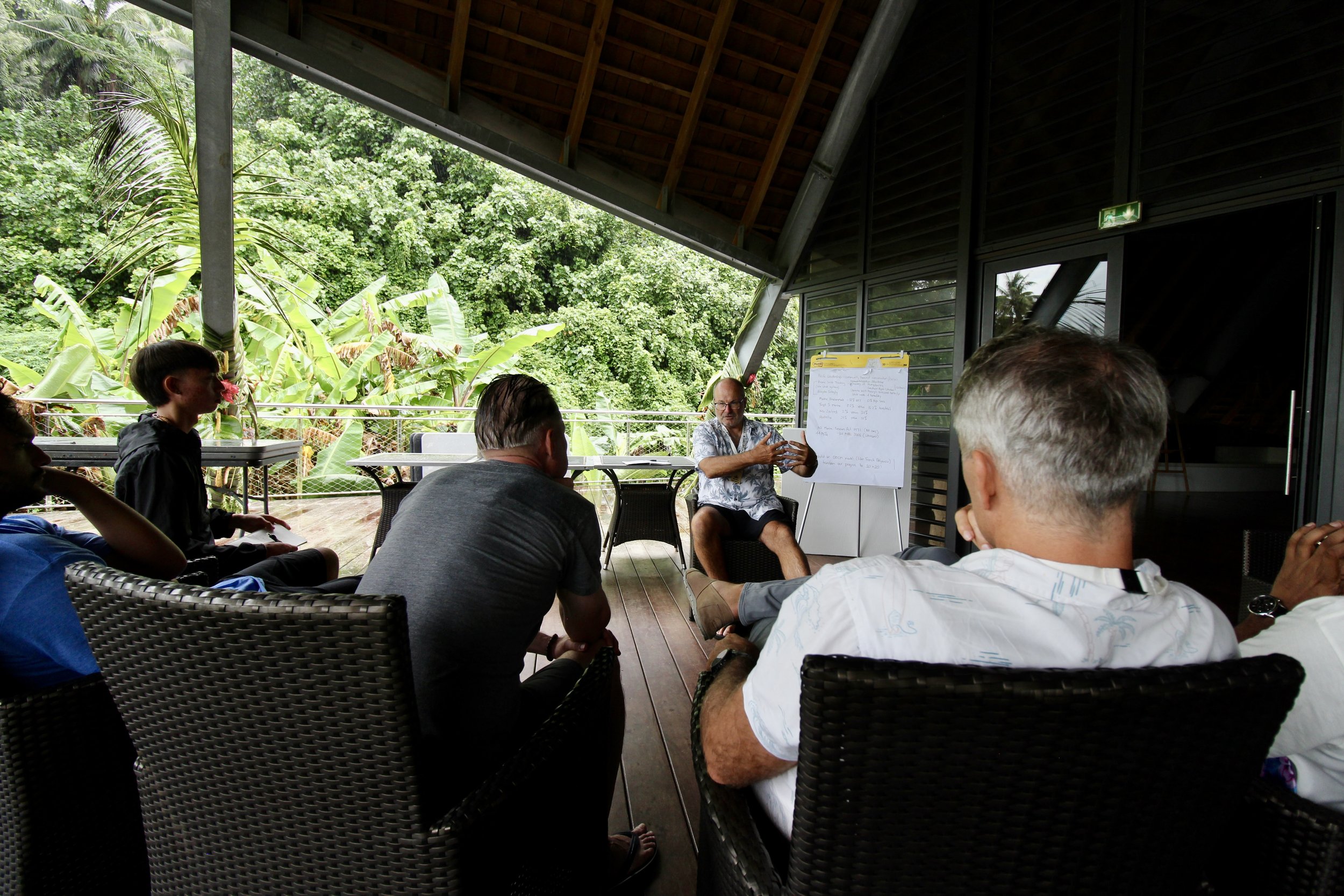Tiaki Moana Day 3 - Whenua and Moana
Ōpūnoho Bay, Mo’orea.
Initial topics emerging from thematics:
1. Defining and Implementing Marine OECMs
Key Points:
Community Consent: Indigenous community consent is essential to learn about and potentially recognise, and implement OECMs.
Ownership: OECMs can be owned and managed by indigenous groups, not tiny governments.
Subsistence Take Zones: OECMs can be identified in areas used for subsistence fishing and cultural practices.
2. Indigenous and Local Knowledge
Key Points:
Mahinga Kai: Resource constraints limit the use of traditional food management practices, but there's increasing confidence in utilizing ancestral knowledge.
Te Tiriti (Treaty of Waitangi): Constitutional frameworks need to consider how to support indigenous governance and conservation.
Re-Indigenization: OECMs could well be led by indigenous communities, protecting their intellectual property and cultural knowledge.
Sovereignty and Decolonization: Indigenous communities are actively asserting their sovereignty in seeking to protect their cultural and environmental governance systems.
3. Existing Marine Management Tools
Key Points:
Customary Practices: OECMs must build on traditional management tools like Rahui and Mataitai.
Indigenous-Led Management: Indigenous control is vital, including appropriate resource allocation and adaptive management.
Cultural Knowledge and the current global economic system: Indigenous practices must not be commodified. Support for cultural entrepreneurship is needed.
4. Innovative and Sustainable Approaches
Key Points:
Relationship-Based Conservation: OECMs should reflect indigenous relationships, respect, and reciprocity - the ocean supports humanity and humanity has a responsibility to care for the ocean.
Collaboration and Learning: Networks like the emerging Tiaki Moana community can foster shared learning, motivation and collaboration in marine conservation.
Funding and Tools: Developing Pacific-specific funding mechanisms and resources is essential to sustain better caring for the ocean, potentially including OECMs.
5. Governance and Future Generations
Key Points:
Inside-Out Approach: Conservation must begin with indigenous communities and extend to any other necessary decision-making.
Youth Engagement: Teaching younger generations is critical for the future of indigenous knowledge, environmental resilience, and ocean health regeneration.
Collaboration Across Worldviews: There are often tensions between indigenous and industrial perspectives, especially regarding the management of and care for marine resources.
Resource Management and Wealth: Indigenous wealth lies in land and sea security, not in external economic promises. The medium-term focus should be on ensuring the needs of future generations can be met.










Moana Field Trip
On our field trip, we had the opportunity to explore conservation efforts in action around Mo'orea.
One group visited the Moana, where they learned about three impactful organizations focused on coral reef monitoring, cetacean guardianship, and woman-led spearfishing. Each of these organizations is making a positive difference in both the local community and the environment, working to protect marine life and promote sustainable practices.
Whenua Field Trip
The second group was hosted by the Tahitian Historical Society, who had organized for us three activities: a walk through their domain where they grow ancient plants, a tapa workshop where we learnt about detaching the bark and processing it, and finally a weaving activity.
Thank you to our sponsors and partners for their support!



















